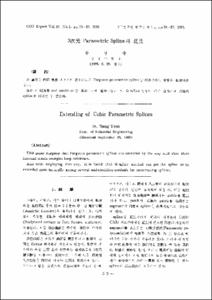용융 아연에 의한 합금강의 침식현상에 관하여 (Ⅰ)
- Alternative Title
- A study on the attacking phenomena of alloy steels by molten Zine (Ⅰ)
- Abstract
- 본 실험은 용융 아연 도금용 도금조의 재료로서 경제적이면서도 가장 내식성이 우수한 재료를 개발하기 위하여, 우선 stainless steel(AISI 304)를 이용하여 용융아연과의 반응성 정도늘 450℃-600℃의 온도 범위내에서 정량적으로 측정하였으며, 아울러 반응 mechanism도 규명하여 보았다. 그 결론은 다음과 같다.
1. 용융아연에 의한 stainless steel의 단위면적당 침식량(w)은 시간(t)의 제곱근에 비례한다.
2. 용융 아연에 의한 tainless steel의 단위면적당 침식량은 mild steel에 비하여 1/3-1/2이상 적음을 알 수 있었다.
3. 용융 아연에 의한 stainless steel(ASI 304)의 침식반응은 530℃를 경계로 하여 그 이하의 온도에서는 diffusion controlled process이며 그 이상의 온도에서는 surface controlled process로서 이때 각각의 반응에 요하는 activation energy는 각각 4Kal/mole 및 10Dcal/mole이다.
4. Calvanizing tank 용 재료로서 stainless steel(AISI 304) 이 mild steel 보다 훨씬 우수하다.
To develope a materials for galvanizing tank which is not only economical but corrosion-resistent this study first adopted stainless steel (AISI 304) as its material and measured quantitatively the degree which stainless steel reacts with molten zinc under the temperature between 450℃ and 600℃. This study also tried to explain its reaction mechainism.
The followings are the conclusions er obtained.
1. The dissolved amount of stainless steel by molten zinc for a unit area was in proportional to the square root of the reaction time.
2. The dissovled amount of stainless steel was found to be a half or one-third of that of mild steel.
3. The mechanisms of the corrosion rections of stainless steel by molten zinc were diffusion controlled process below 530℃ and surface controlled porcess between 530℃ to 600℃; the acivation energies required to activate both reactions were 4Kcal/mole and 10Kcal/mole respectively.
4. As a material for a galvanizing tank, stainless steel was found to be much supeior to mild steel.
To develope a materials for galvanizing tank which is not only economical but corrosion-resistent this study first adopted stainless steel (AISI 304) as its material and measured quantitatively the degree which stainless steel reacts with molten zinc under the temperature between 450℃ and 600℃. This study also tried to explain its reaction mechainism.
The followings are the conclusions er obtained.
1. The dissolved amount of stainless steel by molten zinc for a unit area was in proportional to the square root of the reaction time.
2. The dissovled amount of stainless steel was found to be a half or one-third of that of mild steel.
3. The mechanisms of the corrosion rections of stainless steel by molten zinc were diffusion controlled process below 530℃ and surface controlled porcess between 530℃ to 600℃; the acivation energies required to activate both reactions were 4Kcal/mole and 10Kcal/mole respectively.
4. As a material for a galvanizing tank, stainless steel was found to be much supeior to mild steel.
- Issued Date
- 1975
- Type
- Research Laboratory
- Alternative Author(s)
- Kim, Myung-Ho; Kim, Heung-Sik; Kim, Young-Hong
- Publisher
- 연구논문집
- Language
- kor
- Rights
- 울산대학교 저작물은 저작권에 의해 보호받습니다.
- Citation Volume
- 6
- Citation Number
- 1
- Citation Start Page
- 35
- Citation End Page
- 40
- Appears in Collections:
- Research Laboratory > University of Ulsan Report
- 파일 목록
-
-
Download
 000002023783.pdf
기타 데이터 / 252.74 kB / Adobe PDF
000002023783.pdf
기타 데이터 / 252.74 kB / Adobe PDF
-
Items in Repository are protected by copyright, with all rights reserved, unless otherwise indicated.